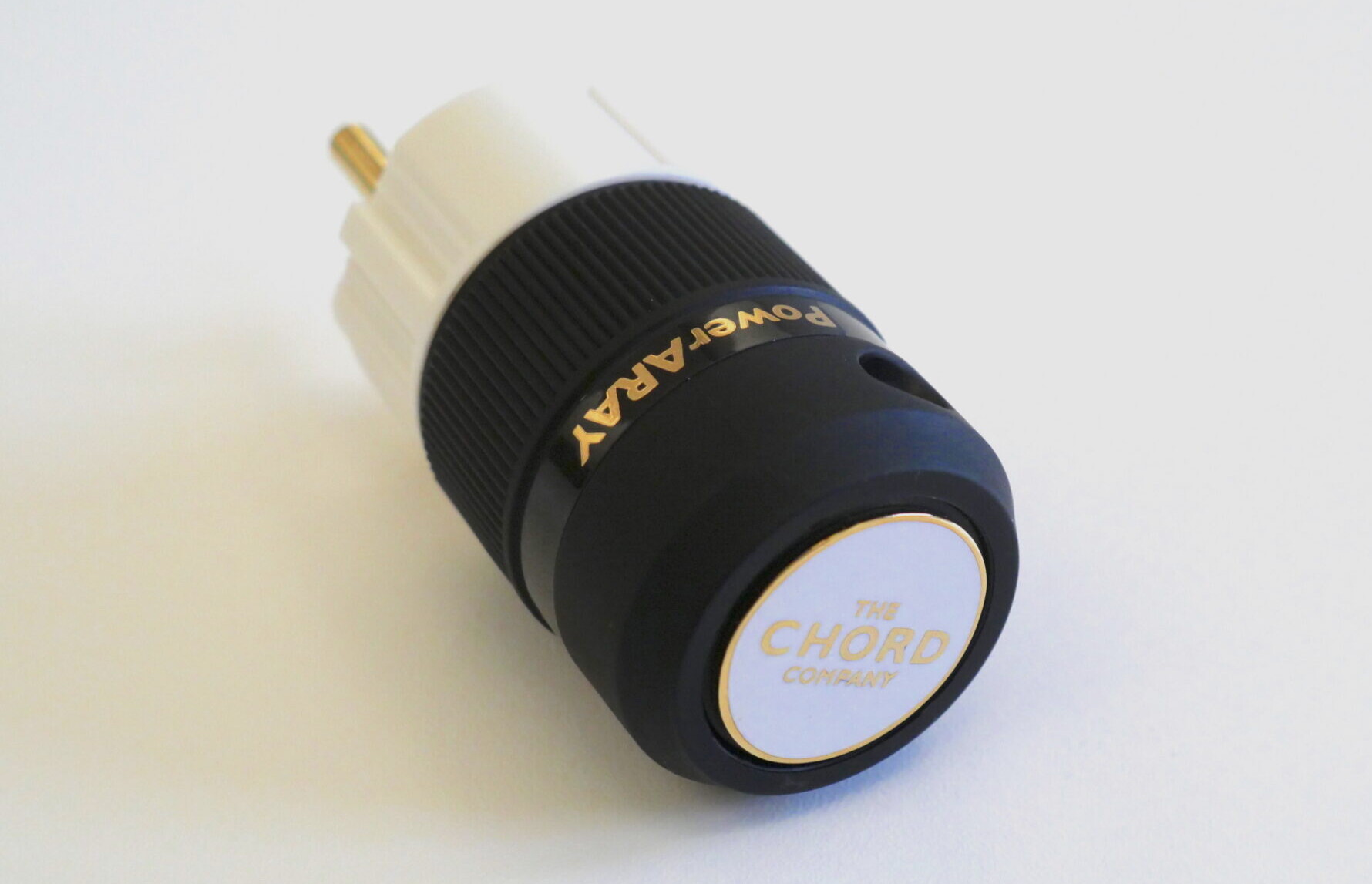It’s a misguided and far from universal reaction, but underpinning it is an essential truth. The GroundARAY is by its very nature, a one-hit-wonder. It simply can’t cover all of the system’s bases. Wouldn’t it be great if you could buy a ‘whole system’ GroundARAY and get the benefit on all your components, all of the time? Well, you sorta can…
Chord has introduced a new addition to the ARAY series – the PowerARAY. Essentially an AC plug with a stubby cylindrical housing built on to its rear, this surprisingly dense device purports to do for the AC supply what the GroundARAYs do for the signal path. Such claims arn’t exactly new. We’ve seen basic AC ground shunts from the likes of Nordost and Russ Andrews, more extravagant efforts from companies like Vertex AQ. They have all been successful to a greater or lesser extent. However, extending the coherence of the ground-quieting technology used in the system across a wider footprint is an undeniably attractive proposition. Combined with experience of Chord’s M6 PowerHAUS distribution block, which shares the same technology, heightened my sense of anticipation still further. But even so, I wasn’t prepared for just how effective the PowerARAY can be.

Insert the PowerARAY as instructed (of which more later) and I suspect you’ll be as shocked by the results as I was. The record I was playing at the time was Krystian Zimerman’s recent recording of Beethoven’s 3rd Piano Concerto (with Rattle and the LSO, DGG 002894839975). It’s a difficult record top reproduce because, recorded in the middle of the Covid era, it spreads the entire LSO across the whole floor of the St. Luke’s venue. In some ways it’s a welcome antidote to Rattle’s overly bombastic direction, but the dispersed instruments make any discontinuities in the system’s performance starkly apparent. Always dramatic, I was just through deciding that the recording and orchestral balance blanketed Zimerman’s playing, forcing him to play louder (and with less subtlety than he’d choose) when the PowerARAY turned up. I plugged it in and the rest, as they say, is history. The ponderous bass gained shape, texture and a sense of direction. The soundstage open out (in terms of space) and locked in (in terms of instrumental location). For once the expansive depth and height were genuine reflections of the recording rather than the recording engineer’s artifice. A nasty edge that had been afflicting the upper registers of the violins was banished. But the word that really sums up the sonic and musical impact is “coherence”. Okay, so you clean up the ground, you drop the noise floor and you expect a more substantial and clearly defined soundstage. In this case, it’s not just that the soundstage is bigger, better defined or more obvious, it hangs together better too. That natural perspective locates instruments more precisely and naturally, while the expected increase in dynamic range combined with the greater sense of focus and location adds up to increased instrumental presence and energy.

